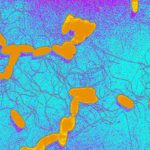Lien vers Pubmed [PMID] – 19709288
Lien DOI – 10.1111/j.1574-6941.2002.tb01018.x
FEMS Microbiol Ecol 2002 Nov; 42(2): 277-88
The prevalence of selected streptomycin (Sm)-resistance genes, i.e. aph (3”), aph (6)-1d, aph (6)-1c, ant (3”) and ant (6), was assessed in a range of pristine as well as polluted European habitats. These habitats included bulk and rhizosphere soils, manure from farm animals, activated sludge from wastewater treatment plants and seawater. The methods employed included assessments of the prevalence of the genes in habitat-extracted DNA by PCR, followed by hybridisation with specific probes, Sm-resistant culturable bacteria and exogenous isolation of plasmids carrying Sm-resistance determinants. The direct DNA-based analysis showed that aph (6)-1d genes were most prevalent in the habitats examined. The presence of the other four Sm-modifying genes was demonstrated in 58% of the tested habitats. A small fraction of the bacterial isolates (8%) did not possess any of the selected Sm-modifying genes. These isolates were primarily obtained from activated sludge and manure. The presence of Sm-modifying genes in the isolates often coincided with the presence of IncP plasmids. Exogenous isolation demonstrated the presence of plasmids of 40-200 kb in size harbouring Sm-resistance genes from all the environments tested. Most plasmids were shown to carry the ant (3”) gene, often in combination with other Sm-resistance genes, such as aph (3”) and aph (6)-1d. The most commonly found Sm-modifying gene on mobile genetic elements was ant (3”). Multiple Sm-resistance genes on the same genetic elements appeared to be the rule rather than the exception. It is concluded that Sm-resistance genes are widespread in the environmental habitats studied and often occur on mobile genetic elements and ant (3”) was most often encountered.

